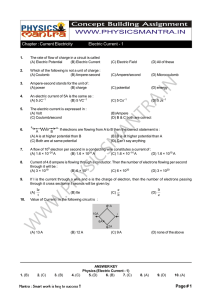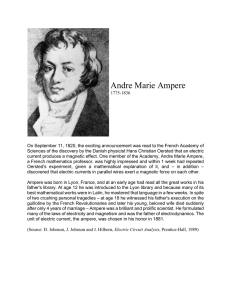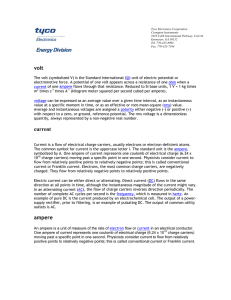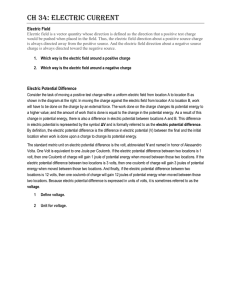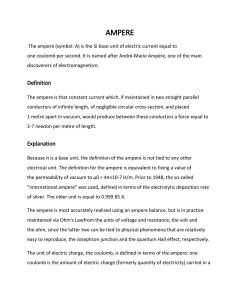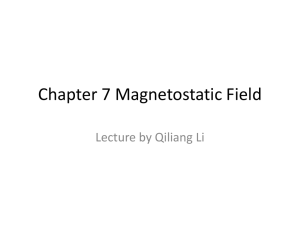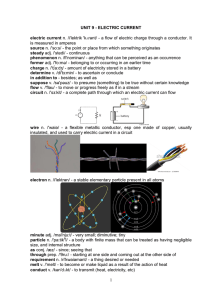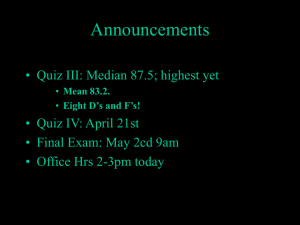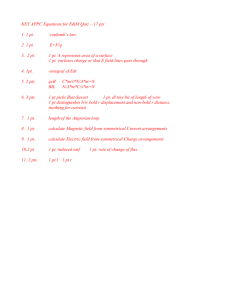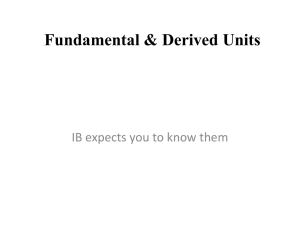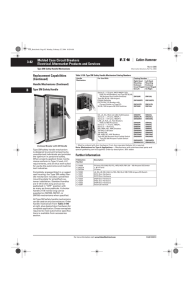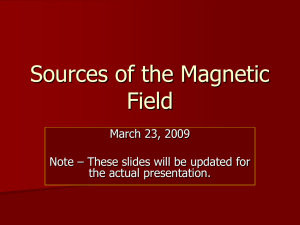Magnetic Fields: Biot-Savart & Ampere's Law
advertisement
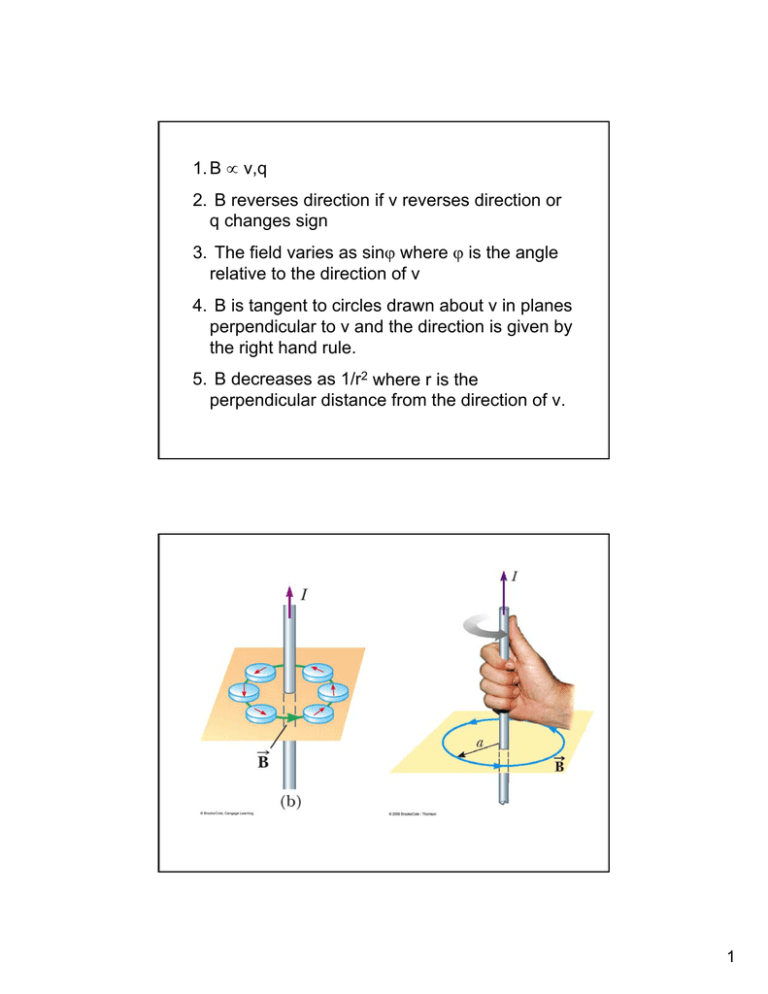
1. B v,q 2. B reverses direction if v reverses direction or q changes sign 3. The field varies as sin where is the angle relative to the direction of v 4. B is tangent to circles drawn about v in planes perpendicular to v and the direction is given by the right hand rule. 5. B decreases as 1/r2 where r is the perpendicular distance from the direction of v. 1 qv rˆ BK r2 qv r BK r3 K 0 = 10-7 T.m/A 4 0 qv r B 4 r 3 B 0 ids r dB 4 r 3 0 q v sin 4 r2 Biot-Savart law 2 B due to a straight current carrying wire Two parallel currents 3 Defining Ampere and Coulomb • The force between parallel conductors can be used to define the Ampere (A) – If two long, parallel wires 1 m apart carry the same current, and the magnitude of the magnetic force per unit length is 2 x 10-7 N/m, then the current is defined to be 1 A • The SI unit of charge, the Coulomb (C), can be defined in terms of the Ampere – If a conductor carries a steady current of 1 A, then the quantity of charge that flows through any cross section in 1 second is 1 C Solenoid 4 Coulomb Gauss E 1 q rˆ 2 4 0 r q E dA 0 Biot-Savart 0 ids rˆ dB 4 r 2 Ampere B ds 0 i 5 Ampere’s law and a solenoid 6 Ampere’s law and a toroid 7
